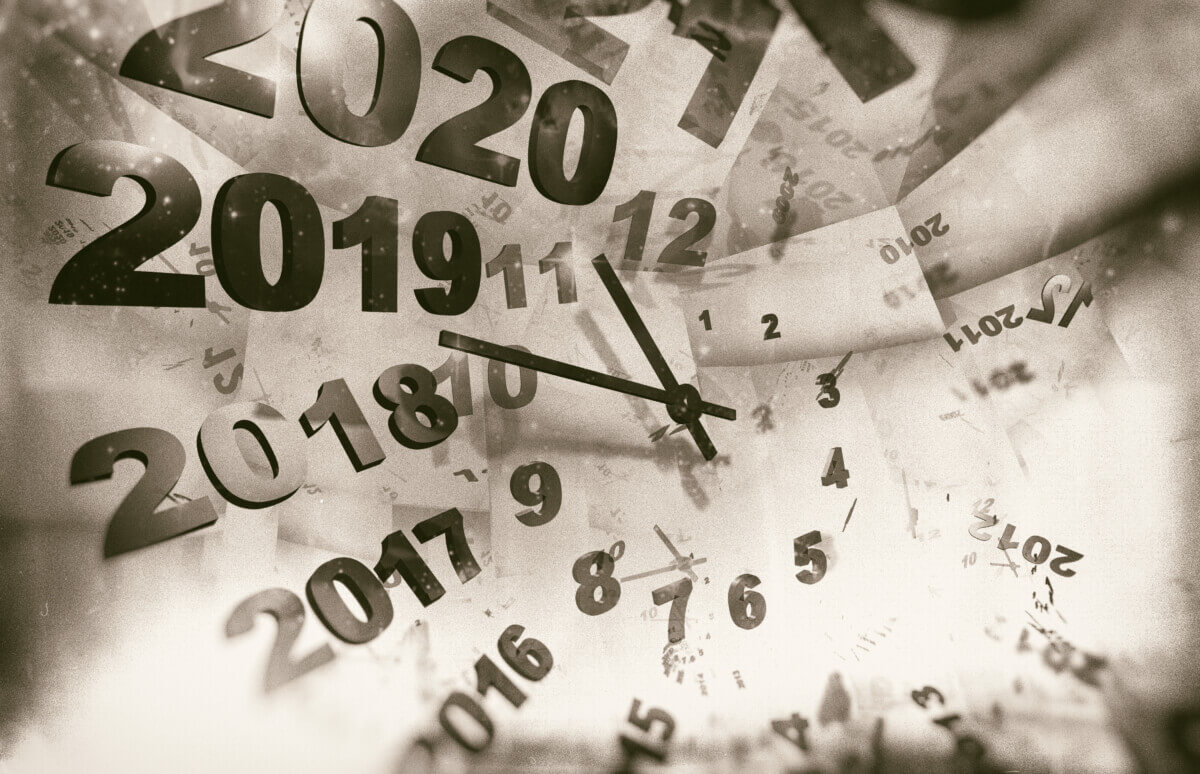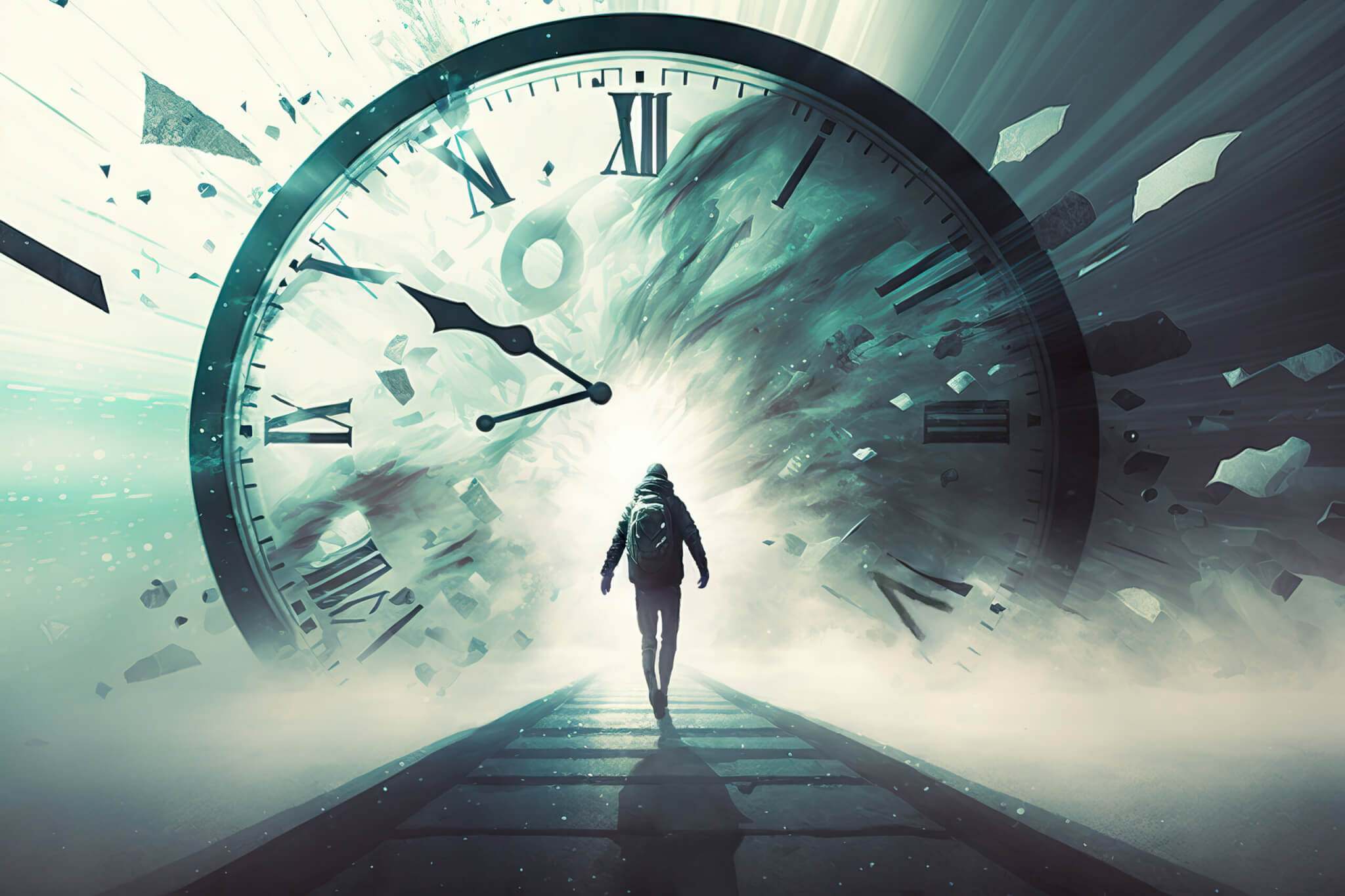
(© andrey_l - stock.adobe.com)
FLORENCE, Italy — “There's just never enough time.” “Where'd the time go?” “Time is flying by.” These common phrases are uttered by busy individuals seemingly all the time. After all, time dictates our daily routines, from the moment our alarms jolt us awake to the second our heads hit the pillow at night. We're constantly watching the clock, trying to beat it, or lamenting its passage. But have you ever stopped to ponder what time actually is? Is it a real, tangible thing or merely a construct of our human perception?
This question has puzzled thinkers for centuries, but a group of Italian researchers may have just shed new light on the enigma. In a recent paper, Alessandro Coppo and his colleagues from the University of Florence propose a novel way of understanding time using the mind-bending principles of quantum mechanics. More specifically, they point to time as a result of quantum entanglement.
The authors demonstrate this quantum-to-classical transition mathematically, showing how their quantum definition of time morphs into the classical time parameter we're accustomed to as the clock system becomes larger and more classical.
The Quantum Clock Concept
In the world of physics, the concept of time has always been a bit of a puzzle. Traditional quantum mechanics treats time as an external parameter, separate from the observable properties of a system. However, this new study delves into what's known as the Page and Wootters mechanism (PaW), which proposes treating time as a quantum observable, and presents a fascinating implementation of this idea.
The PaW mechanism, introduced in the 1980s, suggests that time for an evolving system can be defined through its entanglement with another system, referred to as the “clock.” In simpler terms, this means that the state of one system (the clock) can be used to mark the passage of time for another system. This approach suggests that time can be treated as a part of the quantum system, rather than something outside of it.
In their study, published in the journal Physical Review A, the researchers used two non-interacting yet entangled systems: a harmonic oscillator and a magnetic clock. The harmonic oscillator, a fundamental model in physics, represents systems that exhibit periodic motion, like a mass on a spring or a pendulum. The magnetic clock, on the other hand, is described as a spin system under the influence of a magnetic field.
Here's the catch: for this to yield anything resembling our usual understanding of time, the clock itself must transition from the weird and wacky quantum world to the more familiar classical realm. In essence, it needs to become a large, everyday object where the strange effects of quantum mechanics fade away.
Think of it like this: a tiny, atomic-scale clock might be able to track time for an equally tiny quantum system, but it would have trouble doing the same for a larger, more complex entity. To reliably tell time on a grander scale, you'd need a more substantial timepiece. It's a bit like expecting a wristwatch to track the unfolding of the entire universe — it's just not up to the task.
Quantum Dynamics and Classical Behavior
One of the key aspects explored in the paper is how quantum dynamics can transform into classical-like behavior under certain conditions. When the clock system meets criteria related to macroscopicity (being large enough to behave classically), the classical notion of time emerges naturally from the quantum description. This transition is crucial because it bridges the gap between the quantum and classical worlds, offering insights into how classical physics can arise from quantum principles.

The researchers first delved into the quantum description of both the clock and the harmonic oscillator. They represented the clock using spin operators and the harmonic oscillator using bosonic operators. By examining the entangled state of these two systems, they derived conditions under which the clock can accurately describe the dynamics of the harmonic oscillator.
To further understand the behavior of the system, the researchers considered the classical limit of both the clock and the harmonic oscillator. By treating the clock as a macroscopic system (a system that is large enough to be described by classical physics), they were able to show that the clock's energy scale significantly impacts its ability to track the dynamics of the harmonic oscillator. This step is essential in making the connection between the quantum description and the classical equations of motion that govern everyday physical systems.
This idea aligns with our intuitive sense of time, but it also hints at a deeper truth: perhaps the flow of time as we perceive it emerges from the interplay between the quantum and classical realms. Maybe it arises from the relationships between systems rather than existing independently.
A Fuzzier Understanding of Time
While these ideas are still highly theoretical, they offer a fresh take on one of the most profound questions in physics. They suggest that time, as we know it, could be a consequence of the transition from the quantum world to the one we inhabit. This view could have implications far beyond the ivory towers of academia. As we develop increasingly precise clocks and delve further into the quantum realm, a clearer understanding of time itself could be crucial.
From improving GPS navigation to synchronizing global communications networks, the applications are immense. Understanding how time can emerge from quantum systems has potential applications in developing more precise quantum clocks and could influence the way we approach problems in quantum computing and quantum information science. Furthermore, the study enhances our comprehension of the foundational aspects of quantum mechanics and its relationship with classical physics.
The innovative approach presented by Coppo, Cuccoli, and Verrucchi in defining time through quantum entanglement opens new avenues for exploring the nature of time. By implementing the PaW mechanism with a harmonic oscillator and a magnetic clock, they provide valuable insights into the transition from quantum to classical dynamics.
So, the next time you find yourself watching the seconds tick by, remember that steady march may not be as solid as it seems. Time, as we perceive it, could just be an illusion, a trick of the mind emerging from the hazy boundary between the quantum and the quotidian.
And who knows? Perhaps one day, armed with a clearer picture of time's place in the grand scheme of things, we might finally unravel some of the universe's deepest mysteries. Until then, the clock keeps ticking... or does it?
EdNews Editor-in-Chief Steve Fink contributed to this report.










